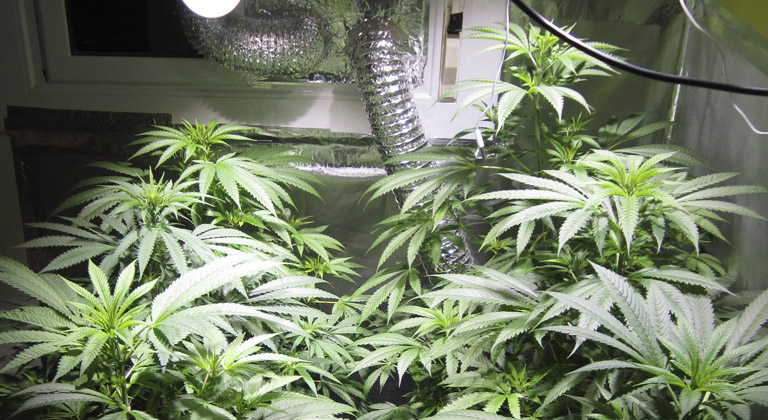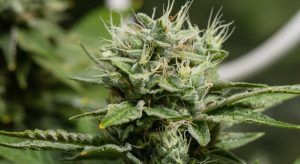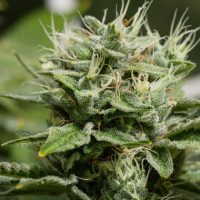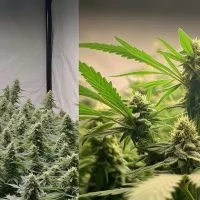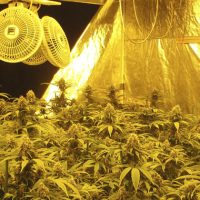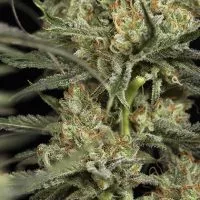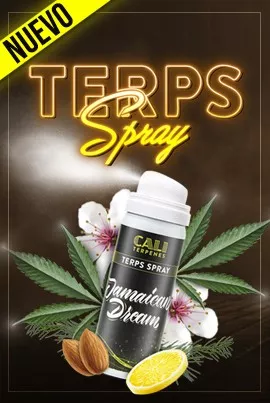What is LED Lighting for Cannabis Plants
LED is an English acronym that stands for Light Emitting Diode. A diode is an electric component that has two terminals and allows for electric currents to pass in just one direction. By applying the right tension. the electrons recombine in order to release energy in the form of photons (electroluminescence).
This electroluminescence-producing phenomenon was discovered in 1907 by Henry Joseph Round in Macroni labs, and then 20 years later Oleg Lósev manufactured the first LED un the Soviet Union. In the 60s they started being used in highly expensive systems as they were originally incredibly expensive and difficult to make.
Thanks to recent developments over the past few years, LEDs now cost less to make and have become more popular. Plus, they’ve also been adapted for indoor cannabis growing.
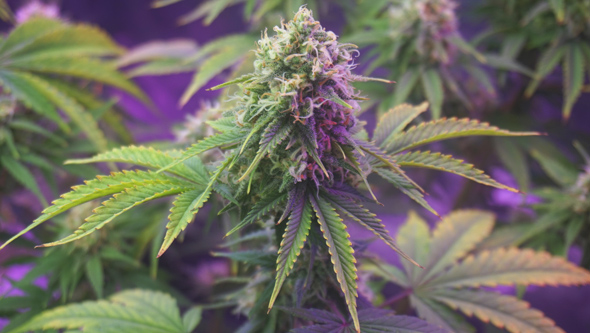
What types of LED are there?
When LED lights for indoor cannabis growing started popping up people were highly expectant due to the fact that performance per watt (the energy used to generate certain amounts of light) was better than with HPS (High Pressure Sodium).
However in practice, yields ended up being less than with high quality HPS systems, so LED lighting was used for the growth period as an additional light, using HPS lighting during the flowering period. Later, COB LEDs appeared which allowed for quite the leap in quality and yield. Nowadays they’re used all over the world in order to achieve better results and make the most of your lights when it comes to indoor cannabis growing.
SMD and COB LEDs
- SMD LEDs (Surface Mounted Device): these are the most common types of light. They’re found in normal lighting, inline lights etc. They produce about 60 – 70 lumens per watt of unidirectional light.
- COB LEDs (Chips on Board): this device has more diodes. Their design and cooling ceramic allow it to produce more lumens per watt and produce less heat (120 lumens per watt).
Blooming LED Panels: Quality and Quantity
Blooming LED panels are LED panels that use COB technology. The LEDs are situated in a panel and each one has a fan, dissipator and lens. They also come with a dimmer so you can easily adjust the amount of light they’re producing.
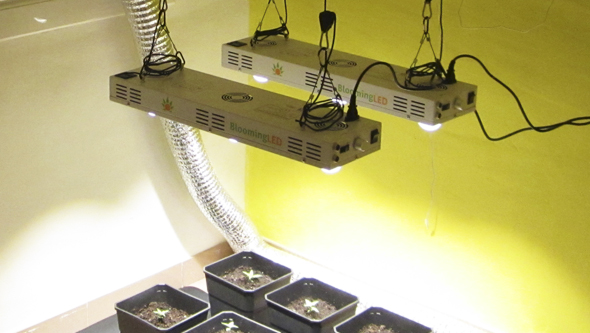
Blooming LED Panel Advantages
- They don’t let off heat; all heat is pushed out away from the light and dissipates.
- Grows that use LED lights produce plants with more flavour and aroma; heat produced by HPS lights destroys part of the terpenes produced by cannabis plants.
- They reduce the need to have AC units in your grow room, reducing electric bills in the process.
- They produce a light sprectum similar to that of the sun.
- Due to the fact that they produce more lumens, the light they produce penetrates deeper and is more even than typical sodium or LED lighting. This makes for larger growth and yields than grows that use energy-efficient lighting or HPS lighting.
- They have a lifespan of over 50,000 hours.
How to Grow Cannabis Using LEDs
In order to make the most of your LED lighting for cannabis plants you need to keep in mind that they’re different than normal HPS lighting. The LED dimmer is incredibly important when growing cannabis; it allows you absolute control over the light your plants receive, making them much more efficient. In order to adjust the lights you’ll need to have a luxometer.
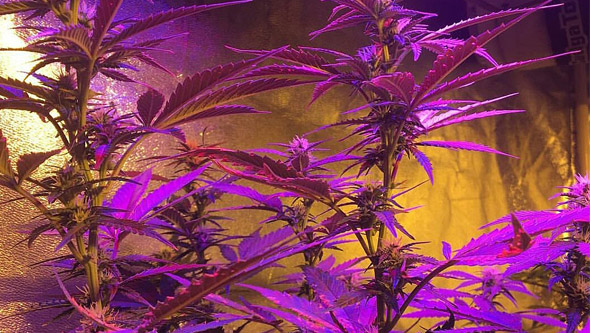
What is a Luxometer for LED Lighting?
Luxometers are incredibly important instruments when it comes to LED lighting; they’re used to measure light intensity in specific areas. A luxometer will allow you to adjust your LED lights to obtain the best possible results.
One of the biggest differences between LED and HPS growing is the distance your lights can be from your plants. Thanks to the fact that you can control light intensity, you can play around a bit more with the distance between your plants and the lights.
We recommend a minimum of 30 cm distance from the top of the buds; any closer may be too stressful for large plants. When rooting clones, we recommend keeping a distance of 80 – 120cm.
LED Lighting According to Plant Phase
As we were saying, when you use LED lighting you have a clear advantage when it comes to adjusting light intensity This means that your plants will be able to make the most of the light emitted, as well as giving them similar light to natural sunlight. LED lighting also allows you to save on your electrical bills.
Each stage of your cannabis plants requires a certain amount of light intensity. If you want to make the most of your LEDs, keep reading; we’re going to have a look at how to adjust your lighting in each stage:
Clones / seedlings
When it comes to new clones and seedlings, you should have the light about 80 – 120 cm from their leaves. Place the luxometer over the top of the plants and adjust light intensity to 800 – 1600 lumens. Once your clones have rooted, you can increase light intensity to up to 4000 lumens until you have to transplant.
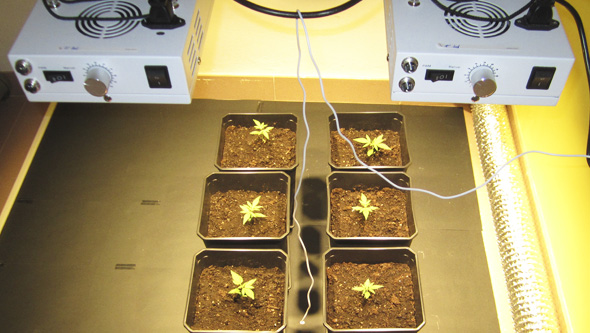
Transplants
During the transplanting phase (the days after switching flowerpots) plants are more sensitive to stress, and if they get too much light they’ll start growing slowly. The right way to light them using a Blooming LED system is to measure the lumens they were getting before being transplanted and keep it at the same level or even a little lower during the couple of days after transplanting.
The third day you can increase the light to 10,000 lumens and let a few days to by to see how they react. If they’re doing good, you can increase it by 2000 lumens a day until you reach 15,000 lumens, which is the limit for the growth phase.
Growth
During the growth stage with Blooming LED lights, your plants are going to need more nutrients than with HPS sodium lighting. You’ll need to give your plants a little extra calcium and magnesium; an easy way to do this is via reverse osmosis and by adding calcium (Ca) until the EC is at 0.3 mS, mix, and then adding magnesium until the EC meter indicates 0.4.
If you notice your plants’ leaves begin to turn yellow along the bottom, this can be due to the larger fertilizer intake and you may need to use some extra nitrogen or a larger amount of growth fertilizer.
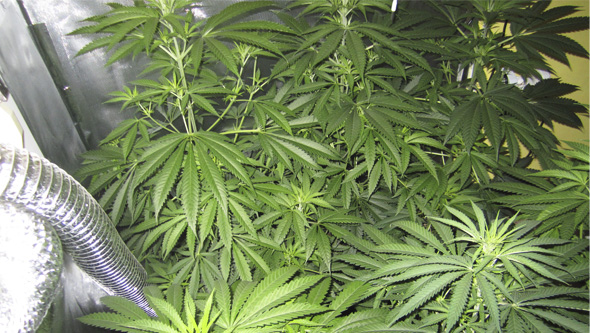
Flowering
If your plants reach the flowering stage after a short growth stage and they’re small, you’re going to need to treat them as if they were just transplanted. However, if they’ve grown large and have a decent root system, you can start flowering at 25,000 lumens, increasing it slowly in order to reach the maximum around the third or fourth flowering week. We recommend getting rid of all of the lower parts of the plant that don’t produce buds so that it can spend more energy making their buds grow larger and fatter.
During the last flowering stage, when your plants are producing the most cannabinoids, we recommend upping your light to the max. You can lower your LEDs to about 30 cm from the plants in order to achieve the best results.
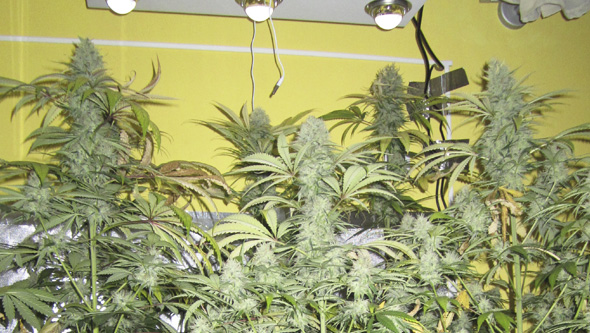
La Huerta Grow Shop
